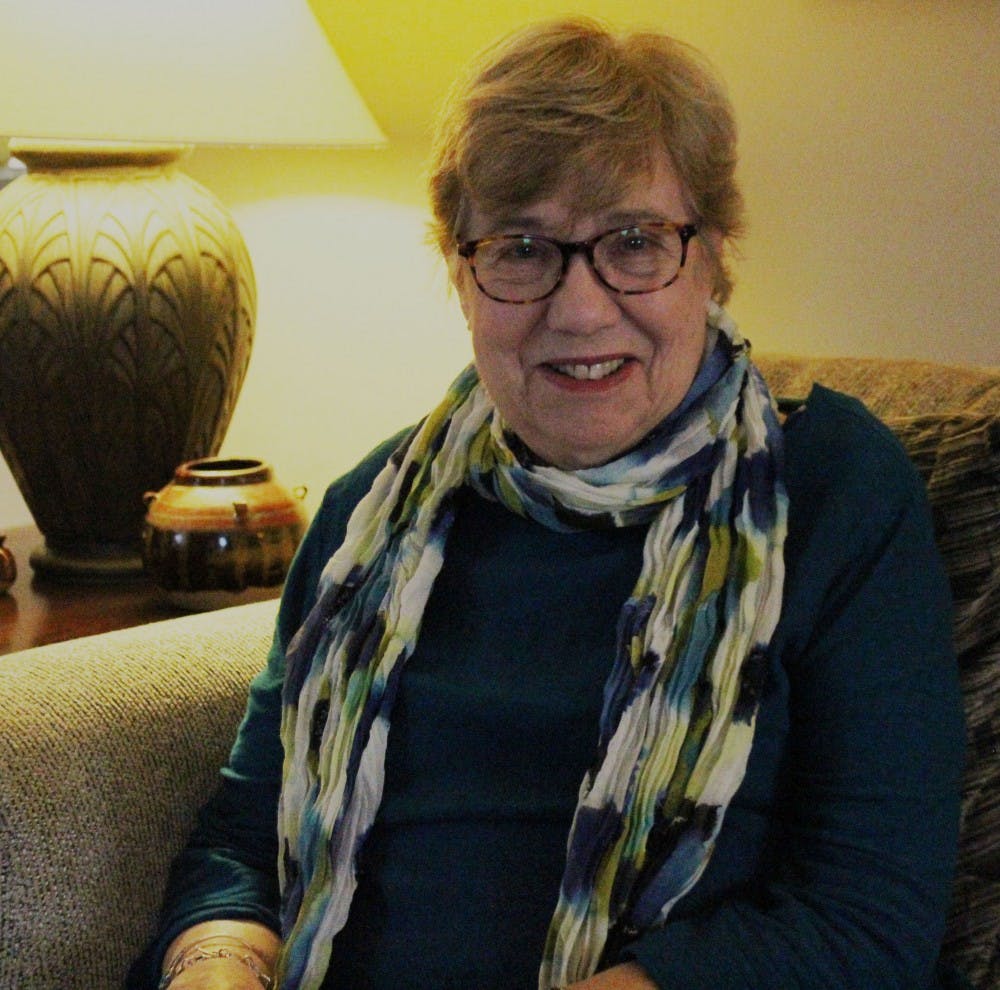Nancy Barber stood among the crowd of women gathered at the Indiana State Legislature watching the light dance across the dozens of silver bracelets branded with the letters “ERA.”
For her, seeing the Equal Rights Amendment finally make it to the floor of the state legislature half a century after it was initially proposed, was reason enough to get emotional.
Barber had the opportunity to witness the action on behalf of the Delaware County League of Women Voters, an organization she’s now co-president of as a 50-year member.
The league originally formed in 1920 at a time when women just got the right to vote. Today, it remains a nonpartisan group dedicated to serving more than six million voters and educating the community about political issues.
The League of Women Voters has more than 700 state and local leagues, including one in Missouri where Barber first joined in 1968 before moving to Muncie in 1969.

Since high school, Barber has had bad episodes of stage fright, nearly passing out when she gave oral reports in class. She saw the league as a way to do her civic duty while improving her public speaking skills.
“After I got involved in the League of Women Voters and saw all these strong women speak in public and not be afraid, I thought I needed to do something to overcome that fear,” Barber said.
Barber began moderating forums and discussing the merits of the Equal Rights Amendment, which was opposed at the time for fears of invalidating labor legislation for women and compelling women to war.
In addition to the opposition, Linda Hanson, spokeswoman for the League of Women Voters, said there was a bias during this period for women in the workforce.
“There was an assumption that women aren’t reliable because they’re going to have kids, and we’re just going to lose them, so we’re not going to invest in them,” Hanson said.
Hanson witnessed the inequalities between men and women first-hand after attending college to get her degree in English.
Two roommates she had at the time were both chemists, one of whom was married. Despite keeping higher grades and acquiring more research experience than her husband, Hanson’s roommate was paid less and offered a quarter of the job offers her husband received.
This bias Hanson witnessed did not stop Barber from attending college to obtain her master’s degrees in political science and public administration in 1976.
Barber graduated the program and found a job working for a General Motors factory, where she climbed the ranks until she became the factory supervisor — something she said she “would never have dreamed in [her] young life.”
Although proud of her daughter’s success, her father was also caught by surprise with her accomplishment.
“'If I wanted you to be a mechanic, I would’ve sent you to mechanic school,'” Barber recalled her dad jokingly saying after she got the position.
Despite Barber’s success within her career, she said standing with the crowd of women on the gallery overlooking the legislature had to be one of her proudest moments.
She remembers the way the gallery erupted in celebration as Indiana became the 35th state to ratify the Equal Rights Amendment Jan. 18, 1977.
That year, the amendment fell short of its addition into the constitution by three states out of the 38 needed, but it still marked a big stride in achieving equality between men and women, she said.
“It’s about time,” Hanson said when she heard the news.
Breathless, Barber ran out of the gallery to call her family from the nearest phone.
“We did it.”
Contact Adam Pannel with comments at arpannel@bsu.edu or on Twitter @AdamPannel.





